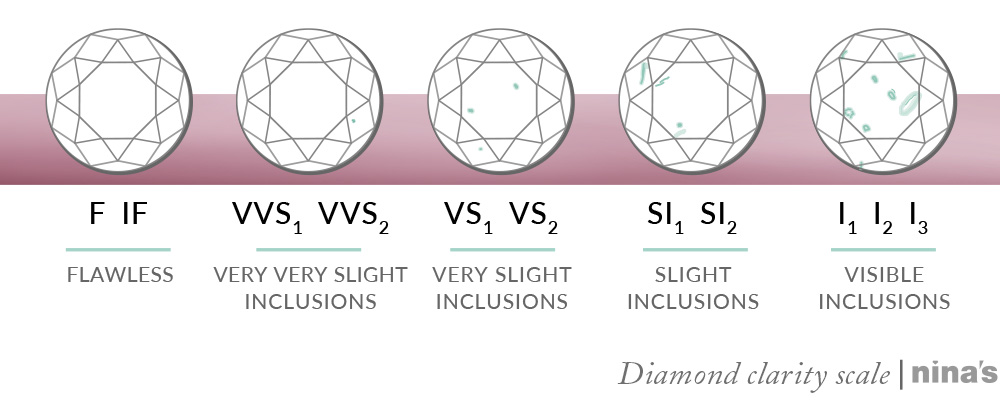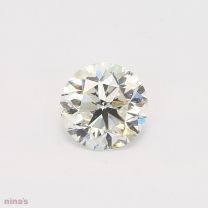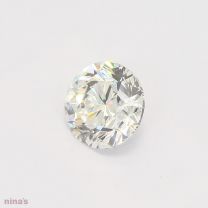Guide to Diamond Clarity & Diamond Grading

Diamonds may be a girl’s best friend, but they aren’t created equally! No two stones are the same.
When choosing a diamond as a family heirloom or investment piece, buyers must understand diamond clarity and diamond grading scales.
What is diamond clarity?
Diamond clarity is the assessment of small imperfections on the stone’s surface and internally.
In jeweller parlance, a stone’s flaws are called blemishes, and internal defects are called inclusions. These tiny, natural blemishes and inclusions are microscopic and do not impact the diamond’s beauty in any way. But these naturally-occurring flaws do impact a stone’s clarity grading. The stones with the fewest inclusions and blemishes get the highest diamond clarity grades.
How does diamond clarity fit into the 4Cs grading scale?
The 4Cs are a universal grading system for diamonds.
The 4cs are: colour, cut, carat weight, clarity.
Clarity on the grading scale is the least important of the 4Cs to consider when purchasing a stone. Most diamonds having a few blemishes and small inclusions that are microscopic and do not reduce the stone’s beauty. The untrained and unaided eye cannot even see them.

What are the different diamond types according to the GIA's clarity grading scale?
The Gemological Institute of America (GIA) diamond grading system and clarity scale was established in 1953. The scale divides stones into six categories and eleven diamond clarity grades. The diamond clarity grading scale is also called the diamond grading chart. The different types of stones and diamond clarity grades are:
I2 and I3 Heavily Included
These diamonds will have apparent inclusions at 10x magnification and can often be seen by the naked eye.
I1 Included
I1 Included diamonds will have minor inclusions that might be visible to the viewer.
SI2, SI1 Slightly Included (SI) Diamonds
In diamonds graded with a clarity of SI, inclusions are noticeable at 10x magnification. Without magnification, some SI1 inclusions are detectable to the unaided eye. SI2 diamonds typically have some inclusions that are visible to the naked eye from the pavilion.
VS1, VS2 Very Slightly Included (VS) Diamonds
VS diamonds will have minor inclusions that can’t be seen with the naked eye but are visible under 10x magnification. VS1 is a higher clarity grade than VS2, which might have some visible inclusions. Diamonds with a VS grade will cost less than a VVS diamond.
VVS1, VVS2 Very Very Slightly Included Diamonds (VVS)
A stone with a VVS grade will have extremely tiny inclusions that are difficult for even experienced jewellers to see under 10x magnification. VVS2 diamonds have more inclusions than a stone with a VVS1 grade.
Internally Flawless (IF) Diamonds
Under 10x magnification, IF stones do not have any visible internal flaws. On an IF diamond, some small blemishes on the surface may be visible.
Flawless Diamonds (FL)
Under 10x magnification, blemishes and inclusions can’t be seen. Hardly any mined diamonds receive this grading, with less than 1% of all diamonds being graded FL. A flawless/FL diamond is incredibly rare and therefore valuable.
How is diamond clarity measured?
Professional diamond graders will create a map of the inclusions in a stone, called a diamond plot. This diagram helps the diamond lab determine the stone’s final grade on the diamond clarity scale.
Nina's diamond clarity buying tips
If you’re in the market for an engagement ring or family heirloom piece of diamond jewellery, knowledge of diamond clarity grading is power and can help you make an informed buying decision.
Several other important aspects of the clarity grading scale you should know are:
• Inclusions are also referred to as “internal characteristics.”
• SI and VS diamonds are some of the most common diamond purchases.
• SI and VS diamonds give buyers the best value for their money.
• The diamond’s shape, cut, and size can impact its final diamond clarity grade.
• A diamond clarity grade also includes the following factors: size, number, position, nature, colour and relief.
No two natural diamonds are the same, just like no two wearers of stunning diamond jewellery are the same. At Nina’s, we only deal with natural stones. Since these natural diamonds are created deep within the earth, most will have some inclusions and blemishes. These unique flaws give the stone its character and enhance its natural beauty. When you purchase a new piece of diamond jewellery for your collection, keep these clarity grading tips in mind.
Our GIA-certified diamond specialists can help!
Contact Us to begin your diamond journey. If you’ve also got your eye on Argyle pink diamonds, take a look at our Argyle Pink Diamond Buying Guide for more information on what to look for.









The information below is required for social login
Sign In
Create New Account